As we close on Black History Month, we’re thrilled to recap the highlights of the remarkable stories of 10 Black architects, each of whom left an indelible mark on the U.S. architectural scene. So, let’s celebrate the incredible people that shaped our communities through skill, passion, and creativity!
Let’s dive into the stories:
1. Robert Robinson Taylor (1868–1942)
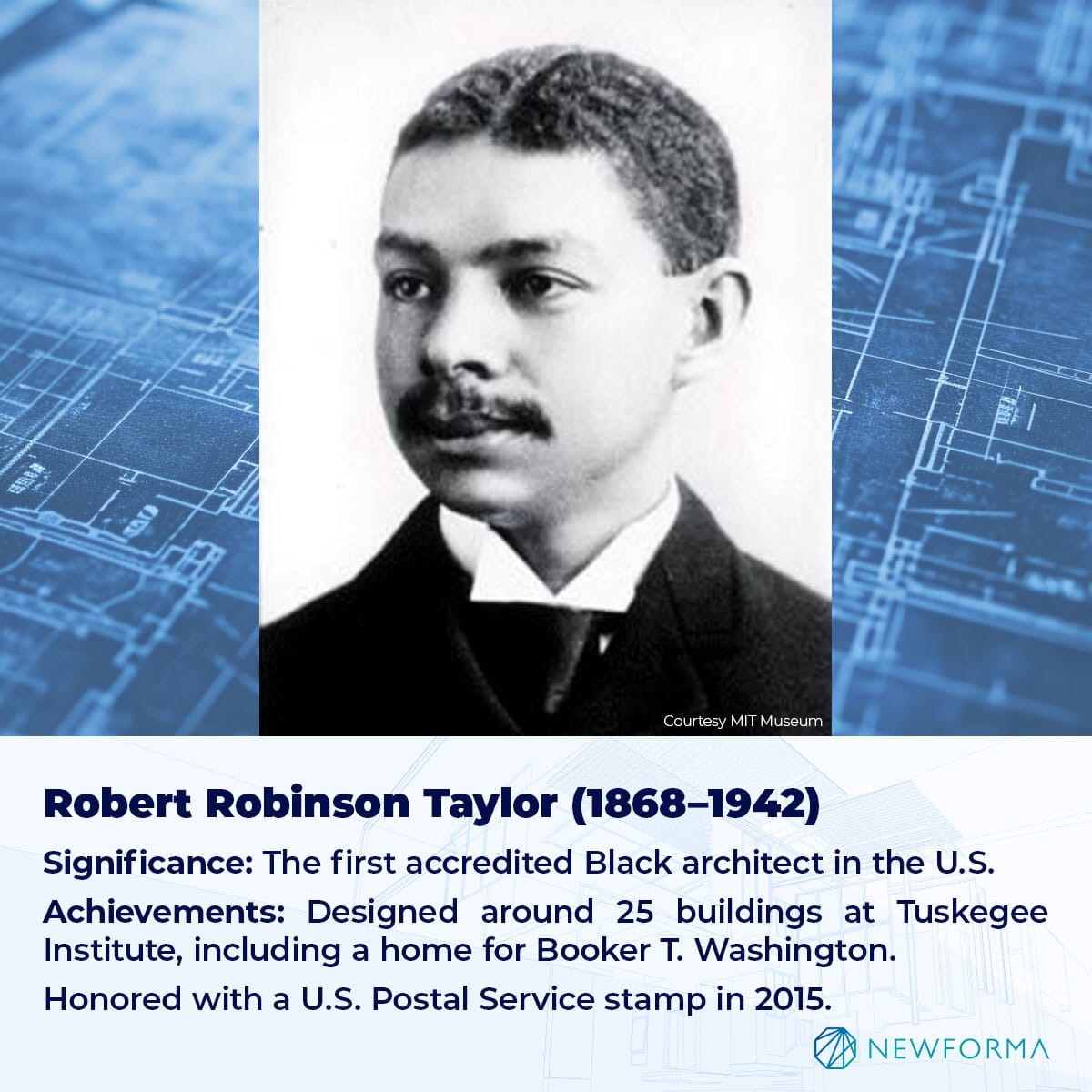
Robert Taylor was the son of a builder and contractor: his father, Henry, built cargo ships and commercial and residential buildings. Robert followed in his father’s footsteps, though he would set his sights on receiving a formal degree. He graduated from MIT’s architecture program in 1892.
Taylor would lead numerous projects throughout his life, but he considered the Tuskegee Chapel (1898) to be his favorite project.
2. Wallace Augustus Rayfield (1874–1941)
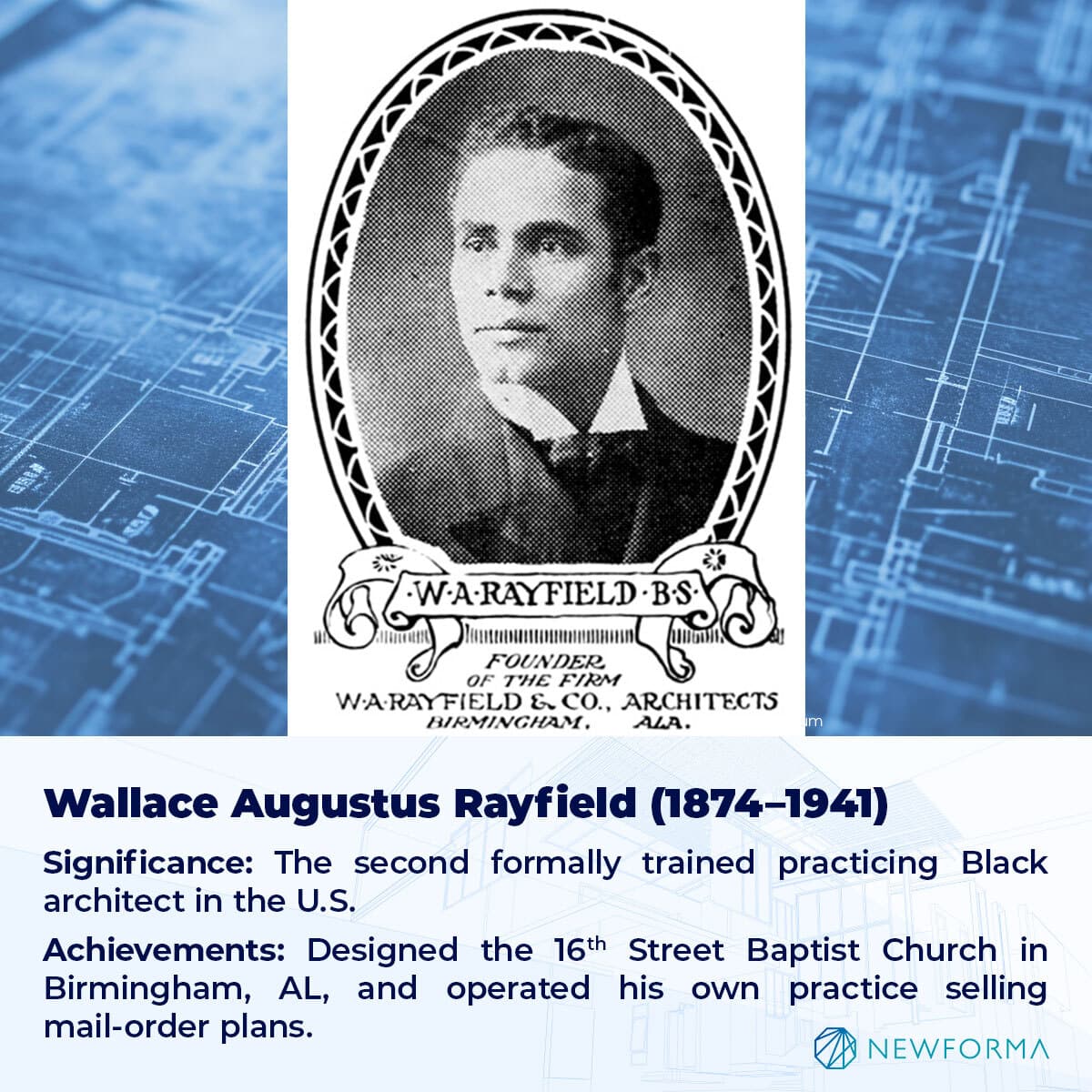
Wallace Rayfield earned his bonafides from Howard University, Pratt Polytechnic Institute, and his degree in architecture from Columbia University. Upon graduating, he was hired as Director of the Architectural and Mechanical Drawing Department at Tuskegee Institute, where he specialized in the design of church buildings.
3. William Sidney Pittman (1875–1958)
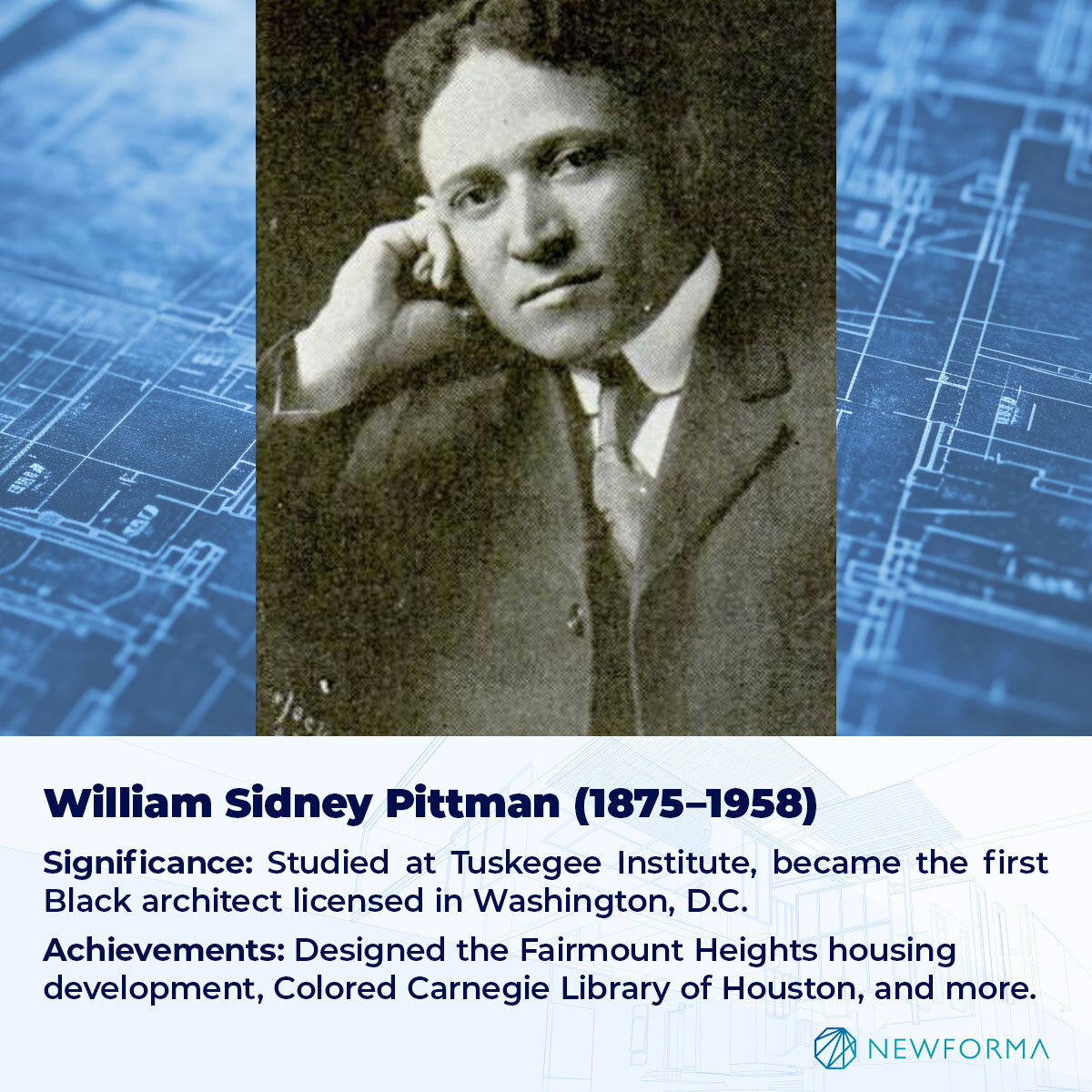
W. Sidney Pittman attended the all-white Drexel Institute in Philadelphia, where he completed the architecture and mechanical drawing program. Returning home to Tuskegee, he taught at the department of architectural drawing, and oversaw campus construction until 1905.
He moved his family to Dallas, TX, in 1912, where he ran his architectural practice and designed churches, civic buildings, manufacturing plants, universities and residences.
By 1923, Pittman became the president of the Brotherhood of Negro Building Mechanics in Texas, and he spent many years advocating for the success of black-owned businesses.
4. McKissack & McKissack
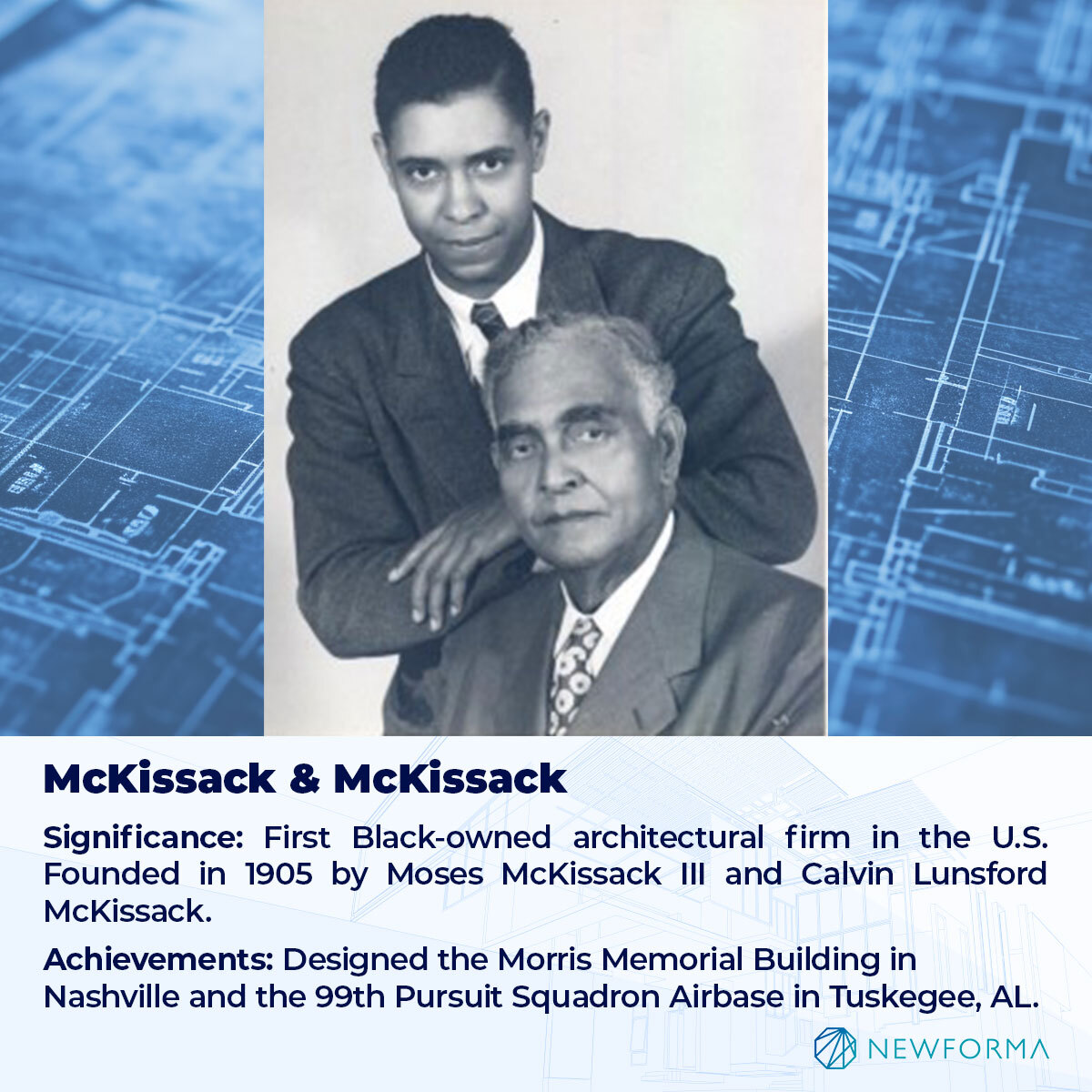
The McKissack family is renowned for having master carpenters, builders and architects since at least the1790s. In 1905, Moses McKissack III founded the McKissack architecture firm, followed by Calvin McKissack starting an independent practice in Dallas, TX in 1912, and later Deryl McKissack founding her own independent practice in Washington DC in 1990.
Today, McKissack & Mckissack are a powerhouse, with offices throughout the United States, serving sectors as varied as schools, energy, cultural sites, and much, much more.
5. Julian Abele (1881–1950)
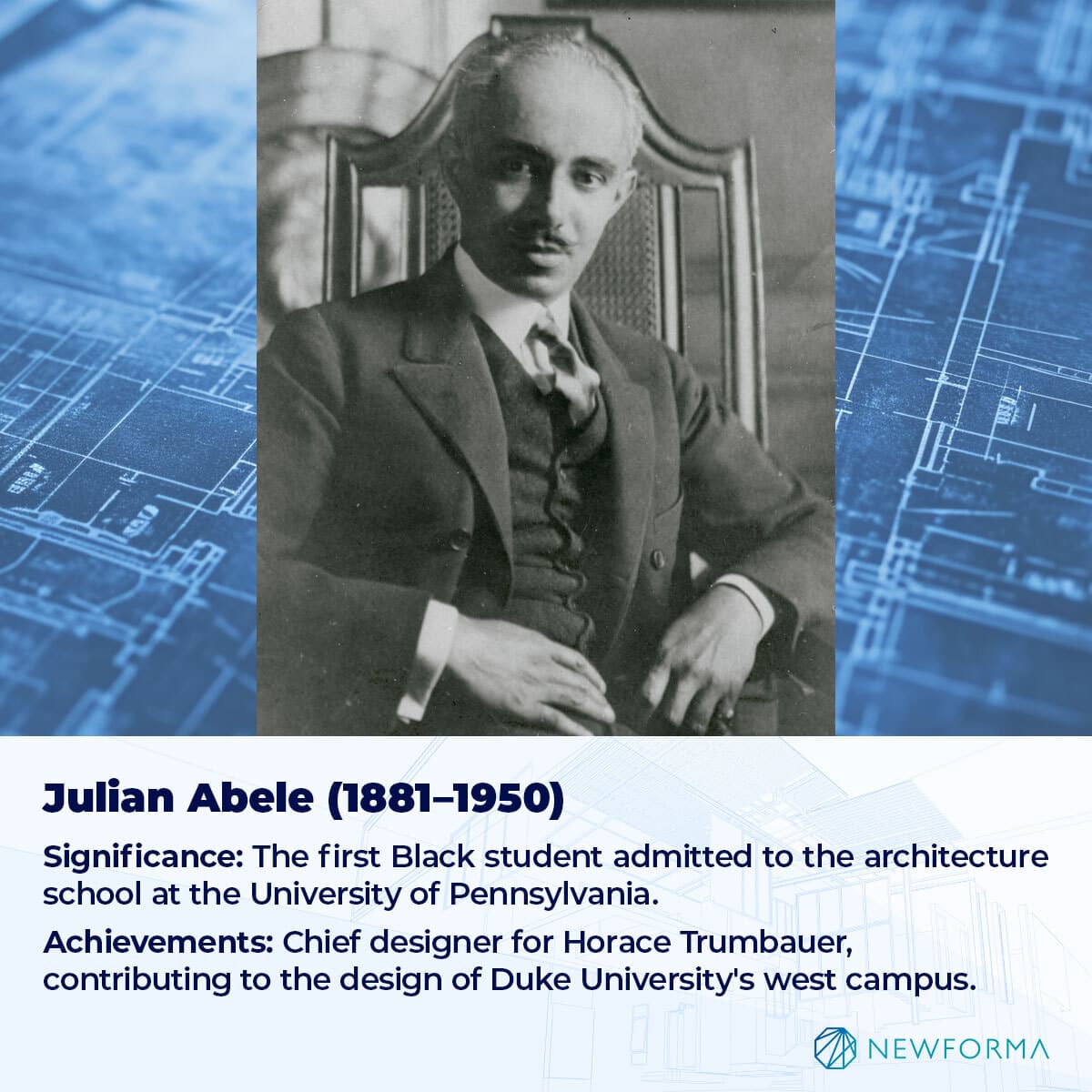
Julian Abele earned his architecture degree from the University of Pennsylvania in 1902, and later traveled to Paris to study at the Ecole des Beaux-Arts.
Throughout Abele’s career, he participated in the design of over 400 buildings, including the Widener Memorial Library at Harvard University, Philadelphia’s Central Library, and the west campus of Duke University.
6. Clarence W. Wigington (1883–1967)
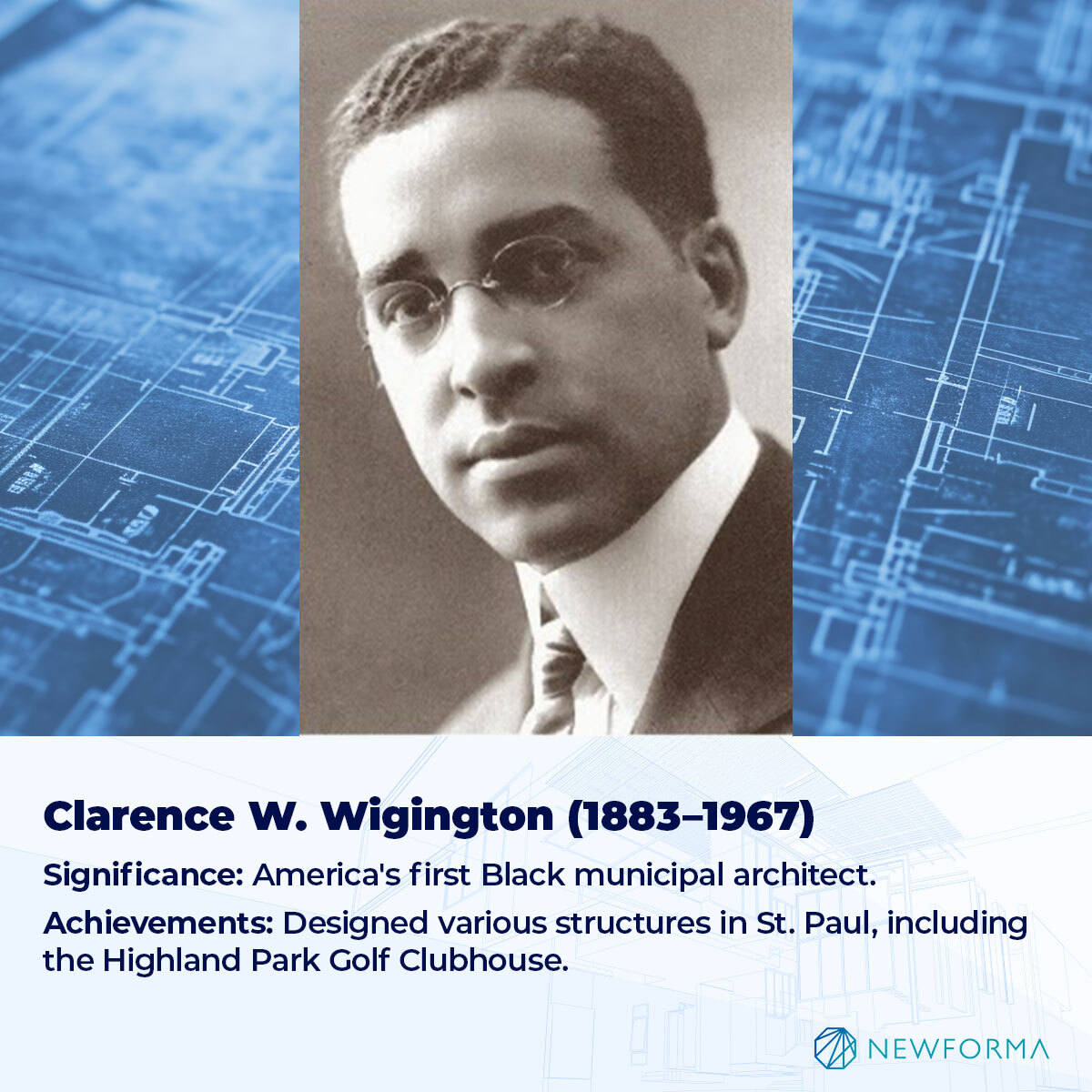
Clarence “Cap” Wigington started his architectural career in 1902, when he joined the American Institute of Architects. Six years later, he started his own office. As a municipal architect for Saint Paul, MN, Wigington designed most of the Saint Paul Public Schools buildings, airports, fire stations, golf clubhouses, and park buildings.
Some of his favorite works, however, were ephemeral: notably he designed the ice palaces for the St. Paul Winter Carnival, in the 1930s and 1940s. These projects let him express his creativity in ways that tight municipal budgets of the time would not normally allow for permanent structures.
7. Vertner Woodson Tandy (1885–1949)
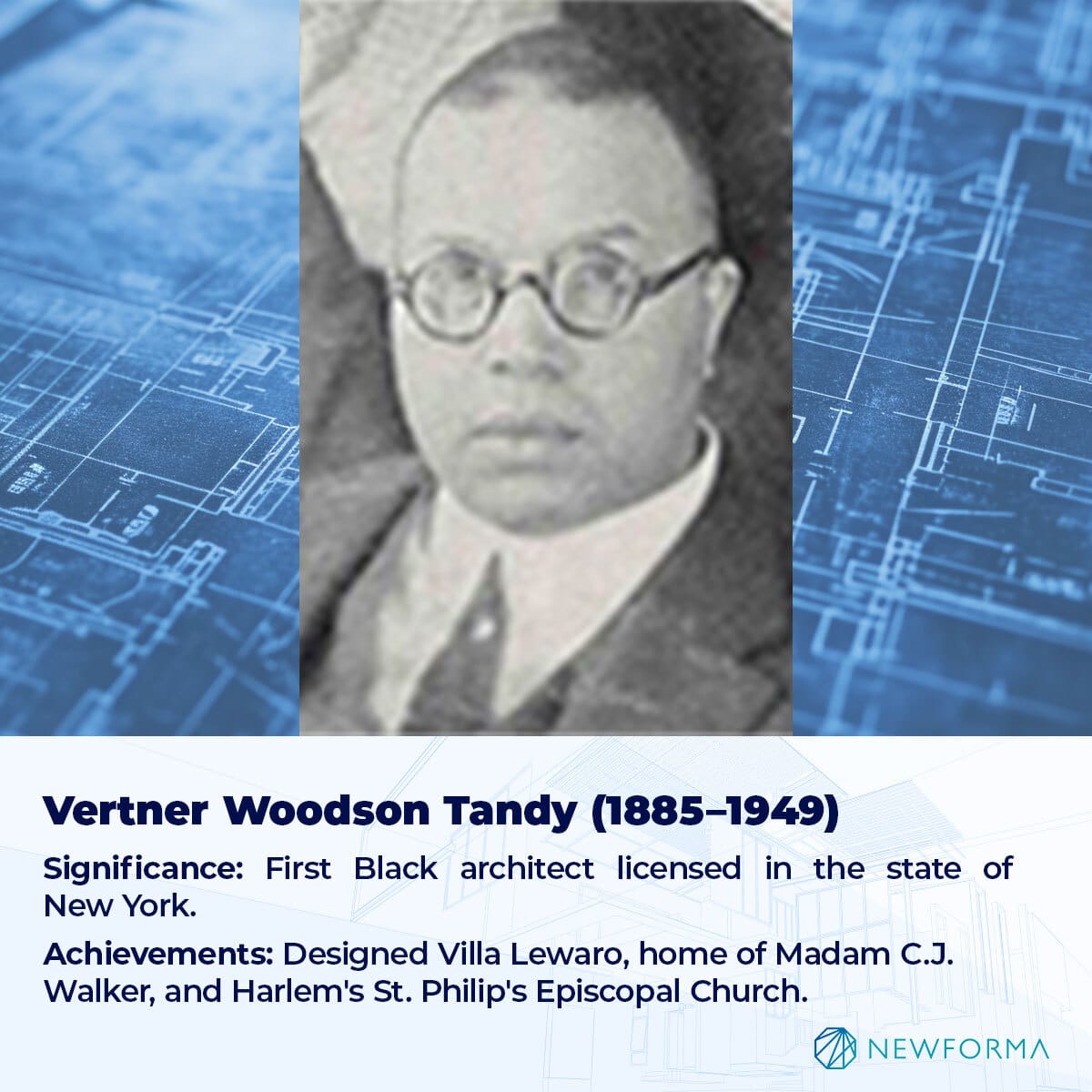
Vertner Tandy attended Cornell University in Ithaca, NY, starting in 1906, where he (alongside six others) founded the first black fraternity: Alpha Phi Alpha.
After graduating, he and George Washington Foster founded the Tandy & Foster architectural firm on Broadway in New York. He became the first black registered architect in New York and would design (among other projects) apartment buildings, such as the Ivey Delph building, which in 2005 was listed on the National Register for Historic Places. His most famous commission was the Villa Lewaro, a 20,000 square foot mansion in Irvington, NY.
8. Paul Revere Williams (1894–1980)
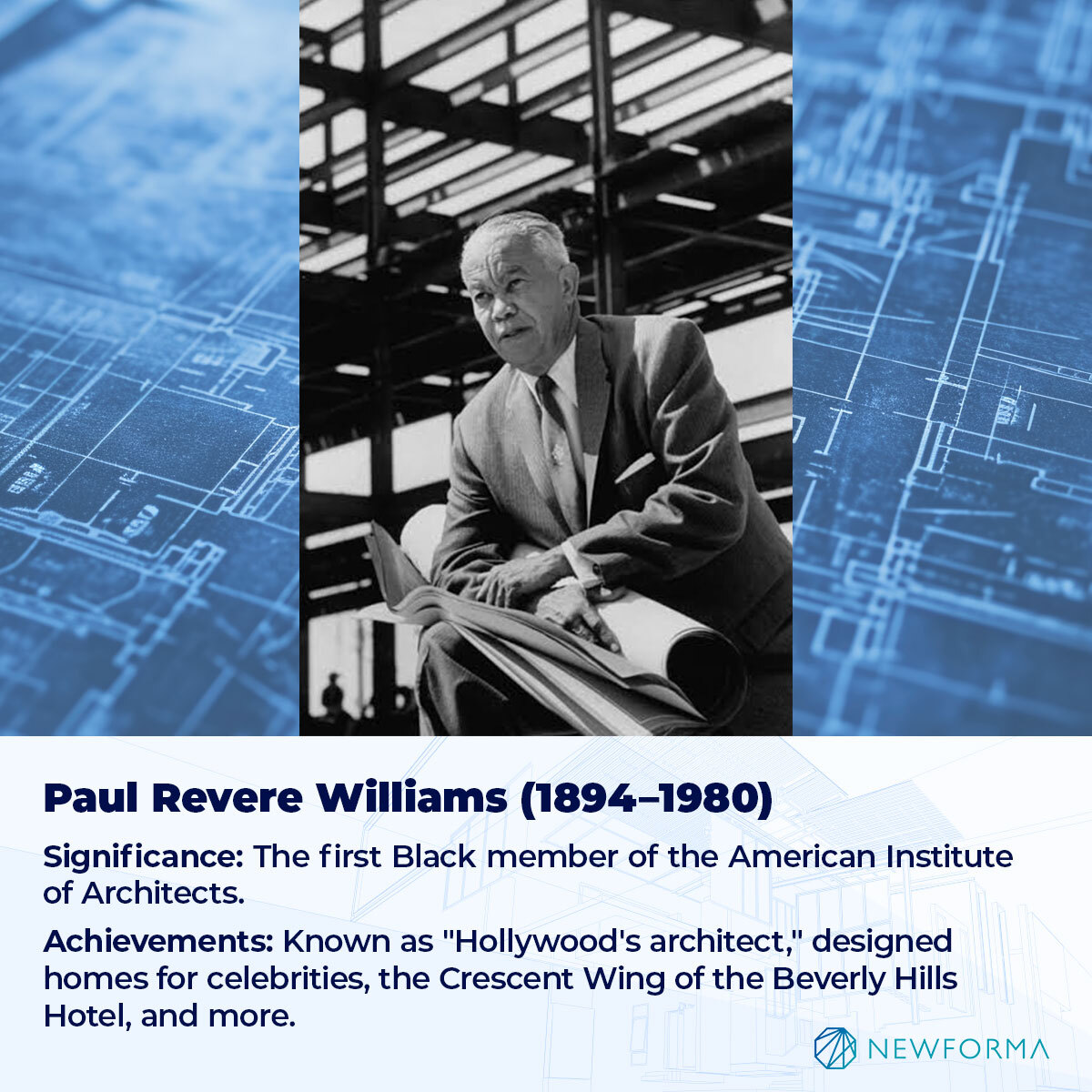
Some say that Los Angeles would not be Los Angeles without the visionary designs of Paul R. Williams. After completing his studies at the Los Angeles School of Art and Design, and the Beaux-Arts Institute of Design in LA, he began his career as a landscape architect. He then earned his degree from the University of Southern California, and in 1921 became the first black certified architect in California.
Throughout his career, Williams would design over 2,500 buildings throughout Los Angeles, including many homes for celebrity clients in Hollywood. Other projects he is famous for include the Los Angeles County Courthouse, the Golden State Mutual Life Insurance Building, Hillside Memorial Park, Westwood Medical Center, and First AME Church.
9. Albert Irvin Cassell (1895–1969)
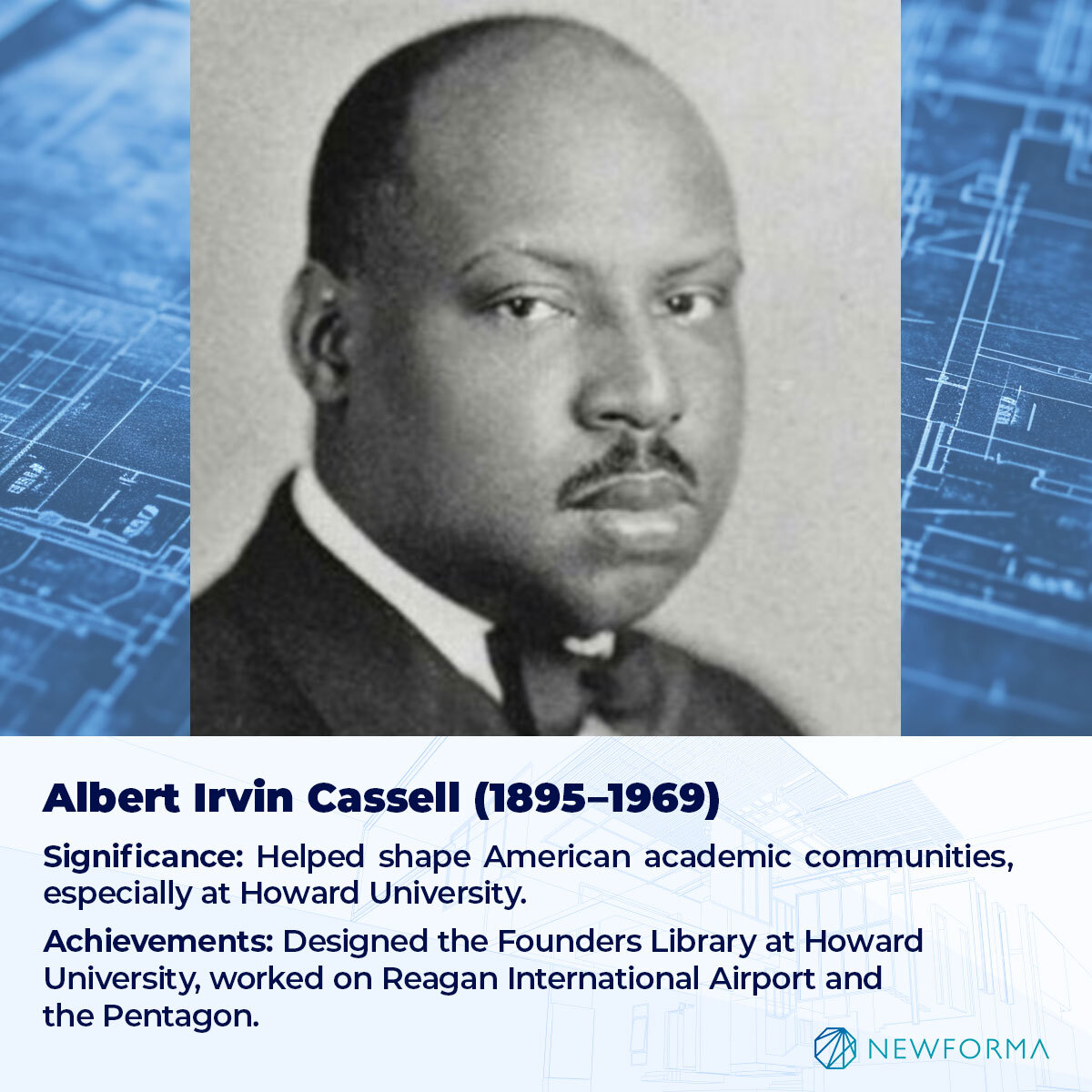
Howard University wouldn’t be the same without Albert Cassel. Cassel graduated from Cornell University in 1917 and, after serving in World War I, joined the faculty of Howard University as an instructor and associate architect. By 1922, he was promoted to department head, where he developed the College of Applied Sciences (later renamed the College of Engineering and Architecture), and the University’s 20-year architecture masterplan. For 18 years, Cassel served as instructor, land manager, surveyor, and architect for Howard University. His most enduring work was the Founder’s Library.
10. Hilyard Robinson (1899–1986)
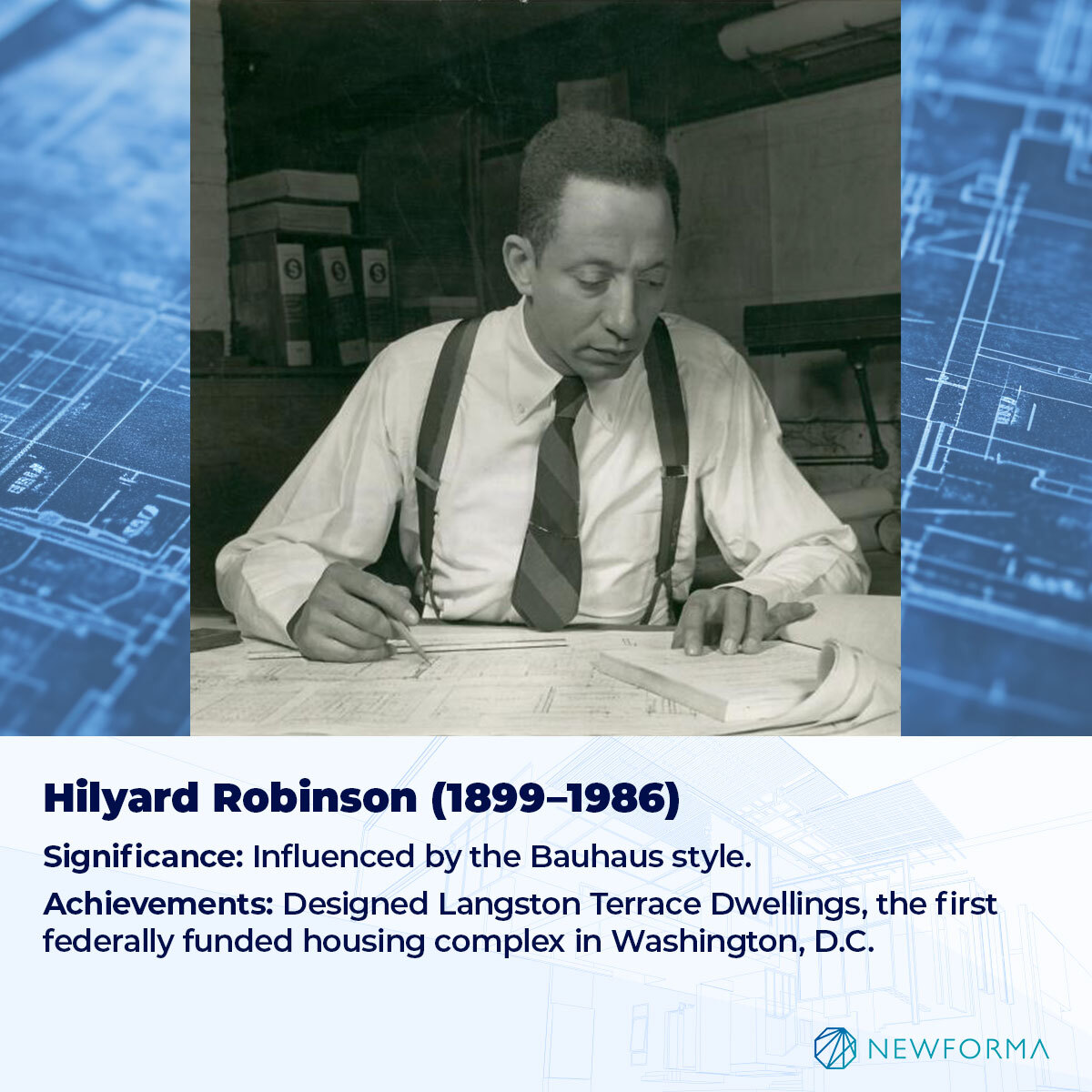
Hilyard Robinson is remembered for being one of the most socially-conscious architects of the 20th century: his public housing designs were so influential that they were the catalyst for the eventual passing of the first Naitonal Housing Act of 1934, under the Roosevelt administration.
Robinson received his B.A. from Columbia University in 1922, and his M.A. in 1931. He taught architecture at Howard University from the 1920s to the 1960s. His notable works include the Langston Terrace Dwellings, which is listed on the National Register of Historic Places.















